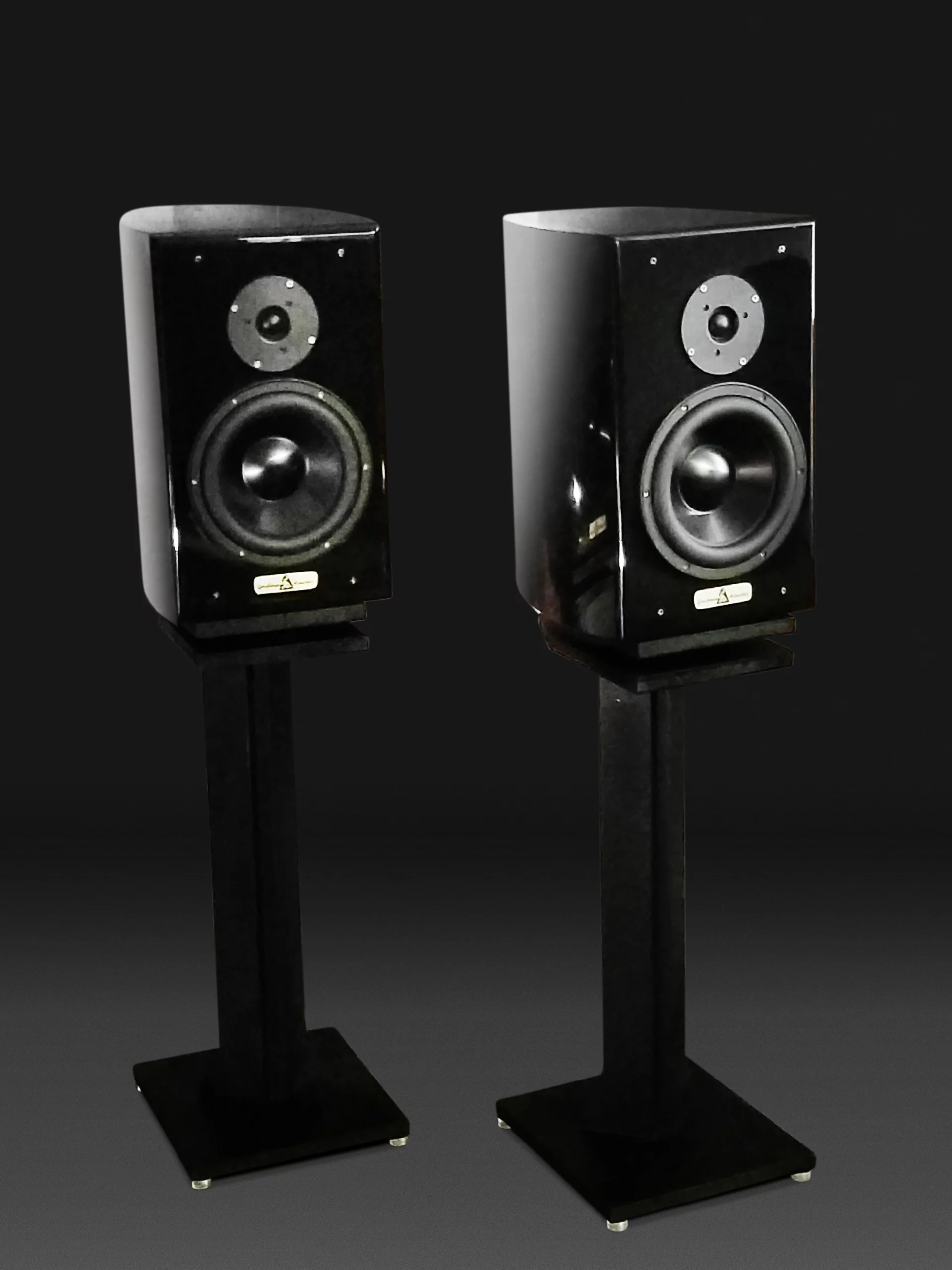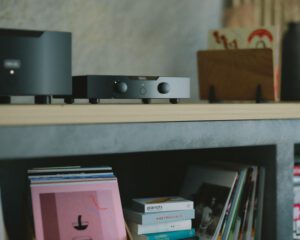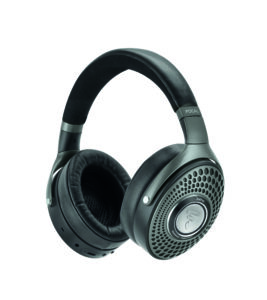
Regular readers of hi-fi+ may remember that back in Issue 186, Roy Gregory reviewed the Gershman Grande Avant Garde floor standing loudspeakers and, I think it is fair to summarise, they impressed him greatly. Indeed they were given a well-deserved Highly Commended award by hi-fi+ in the 2020 Awards edition. Over the years various Gershman Acoustics models have garnered praise and awards from publications around the world. Fast forward to the summer of 2022 and I was able to have an all-too-brief listen to a pair of them at the Audio Pinnacle UK retail outlet, Summer House Sounds. I can confirm everything that Roy said about them in his review – they sounded wonderful. The main purpose of my visit however was to arrange to have a pair of the Grande Avant Garde’s smaller sibling, named Studio II, delivered to me for review. My room, which measures about 16’×12’, is better suited to the smaller design than to a large floorstander.
Despite Roy’s excellent review, and various others which can be found online, Gershman Acoustics is by no means a familiar name to many in the UK audio community, so allow me to introduce them to you again. 2023 sees the company celebrate its 30th anniversary as a business, so Gershman is by no means one of the new kids on the block. Based in Thornhill, Ontario, the Gershman Acoustics product family has secured a strong place in the hearts of North American music lovers, but has not had the same impact here in the UK – at least not until now. Co-owned by the husband and wife team of Ofra and Eli Gershman, with Eli being the Chief Designer and the engineering brains behind the entire product range, while Ofra runs the business side and takes care of sales and marketing, Gershman has built strong links with the Canadian recording industry.
Handsome pair
Some of the models further up the Gershman range have very bold styling, but the Studio IIs are a more conventional stand-mount, as is often the case with models intended for studio monitoring duties. To these eyes at least, they are a handsome looking pair, finished in a high gloss veneer and with a noticeable curve on the side panels from front to rear. The front baffle sports an 8” main drive unit and a 1” soft dome tweeter. This is a sealed box design, so there is no bass port on either the front or the rear. On the latter, a sturdy pair of multi-way binding posts and a metal plaque bearing the model name and the serial number are the only adornments. Weighing in at just under 23kg and measuring 43cm (height) × 25cm (width) × 35cm (depth), the Studio IIs are chunky but look very elegant. Sonically transparent grilles are provided and attach to the front baffle magnetically. I listened with and without the grilles in place and as they are not detrimental to the sound at all, I left them in place for the duration of the review.
Gershman quote a frequency response of 28Hz to 24KHz for this design, with a sensitivity of 87dB and impedance of 6 Ohms. They recommend amplifier power of between 70 and 500 watts.
Setting up the Studio IIs
The choice of stands can be tricky but I used a pair of Skylan stands, which are a hangover from my ownership of a pair of Harbeth Super HL5+s a while ago (and are also Canadian). With four StillPoints Ultra SS vibration control devices arrayed on the top plate, the Gershman tweeters were aligned with my ear height in the listening chair, which is my preferred arrangement. After a little experimentation I settled on a toe-in which had the line from the tweeters intersecting just behind my head.
The amplifier used was my PrimaLuna EVO400 integrated (reviewed in these pages in Issue 201 by Rafael Todes), which is powered by eight EL34 valves (or tubes, depending on your location) which give a quoted 70 watts of power into 8 Ohms. Cables used were the excellent Oephi Lounge. For sources I had my Linn Sondek LP12, with a Dynavector XX2 MC cartridge playing into the Gold Note PH10/PSU, my Yamaha CD-S3000 for CD and SACD replay and an AURALiC ARIES Mini for streaming duties. I used the DAC in the Yamaha for the AURALiC. My REL 305SE subwoofer was connected to the EVO400 but, for reasons which will become clear a little later, I left it switched off throughout the review period.
Listening to the Studio IIs
The review pair of loudspeakers were brand new, having only arrived with the UK distributor a day or two before they were sent to me. I therefore planned to play them for at least 10 hours a day for the first two weeks that they were here, to allow the drivers time to loosen up before getting down to serious listening, and for this purpose planned mainly to use Qobuz through the AURALiC, selecting albums from my Favourites section (which just keeps getting bigger) or playlists curated by Qobuz. My first selection was the HiRes file of the Rolling Stones’ Let It Bleed. So much for not listening! From those wonderful opening guitar notes I was pinned to my seat. The punch and clarity was almost disconcerting, and Merry Clayton’s vocal gymnastics were absolutely compelling. This 53 year old recording sounded more like a live event, happening right here in our lounge. I sat there for the whole album, until the last notes of the epic ‘You Can’t Always Get What You Want’ had faded. It had been a mesmerising 40 minutes or so, from which I concluded that I would start listening seriously right away. Actually I am not one for background music anyway. I am either playing music to listen to it or there is silence. I can not concentrate on a book, a newspaper or indeed anything else when music is playing.
Over the review period the Gershman’s did actually loosen up a little, but it was a very subtle and gradual change – as shipped they are already very listenable. After a day of jumping around my Qobuz` favourites, I mostly stuck to physical media for my listening sessions. I put together a pretty eclectic selection of vinyl to work through, including the 50th anniversary pressing of the aforementioned Let It Bleed, Paul Chambers Bass On Top, The Dunedin Consort under Paul Butt playing Mozart Requiem, Little Feat’s live opus Waiting For Columbus, Love’s Forever Changes, JJ Cale Collected and George Ezra Staying At Tamara’s.
Through the Studio IIs, each of these albums went from sounding like recorded music to sounding like a live event. There was an immediacy to the sound, a realism, that was at first startling but then began to feel as if some missing intangible had been located deep within the records’ grooves. The soundstage created was not over-exaggerated but gave each performer their own place, and the space in which the listened could truly appreciate their artistry. In Bass On Top, recorded in a single day in 1957 by Rudy Van Gelder, there was real sense of musicians listening to each other as well as performing their own part, yet drawing the listener right into the recording studio with them. Paul Chambers’ bass sounded like a large bodied instrument. When bowing one could here the rosin-loaded horsehair being drawn over the strings. This was not an approximation of the music – this was the music. Little Feat’s raucous, joyous performance on Waiting For Columbus was utterly engrossing, and pulled me in completely. I never saw them in concert to my regret but this gave me that experience, as close to being there as I have ever been.
And the bass produced by these comparatively diminutive enclosures was impressive. It was fast and tuneful and I had no difficulty believing that the quoted 28Hz was true. Hence my REL lying unused in its corner throughout the sojourn of the Studio IIs in the system. In fact the whole frequency range is delivered seamlessly, and it is obvious that the crossover has been very carefully judged to not favour any part of the audio spectrum.
Spoken word, which can be the acid test for a loudspeaker’s accuracy, sounded extremely life like.
Conclusion
By now you will have gathered that the Gershman Studio IIs made a lasting impression on me. They have so much to recommend them. They care not a jot what musical genre they are asked to deliver. From soaring choral works to raucous rock, they turn every listening session into an unmissable event. They worked very happily with my relatively modestly powered valve amplifier and would I am sure be equally wonderful with some solid state behemoth. They should be on any short list of stand-mount loudspeakers being considered for audition and I was genuinely sad to bid them farewell.
Technical specifications
- Type two way standmount loudspeaker
- Drive units 1” soft dome tweeter, 8” mid-woofer
- Frequency response 28Hz–24kHz
- Sensitivity 87dB
- Impedance 6Ω
- Recommended amp power 70–500W
- Dimensions (H×W×D) 43 × 25 × 36cm
- Weight 22.7kg
- Price £3,995
Manufacturer
Gershman Acoustics
Distributor
Summer House Sounds
+44(0)1420 544140
By Chris Kelly
More articles from this authorRead Next From Review
See all
PrimaLuna EVO 100 phono preamplifier
- Apr 22, 2024

Reiki Audio SuperSwitch Master Pro + Servant Pro
- Mar 27, 2024

Melco Audio N1-S38 music server
- Mar 27, 2024











